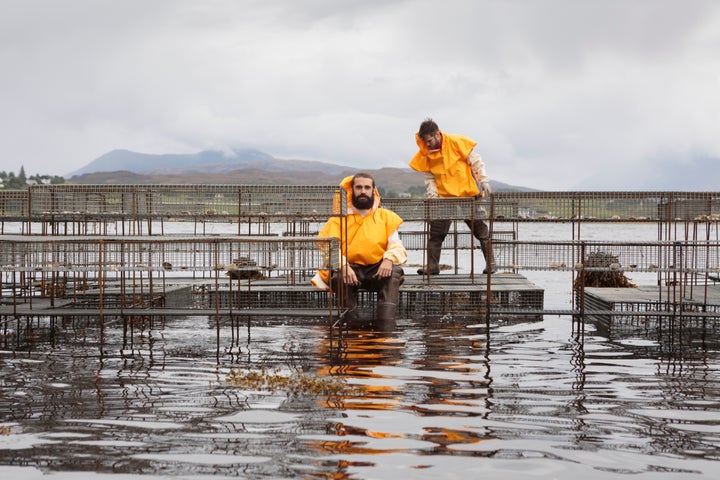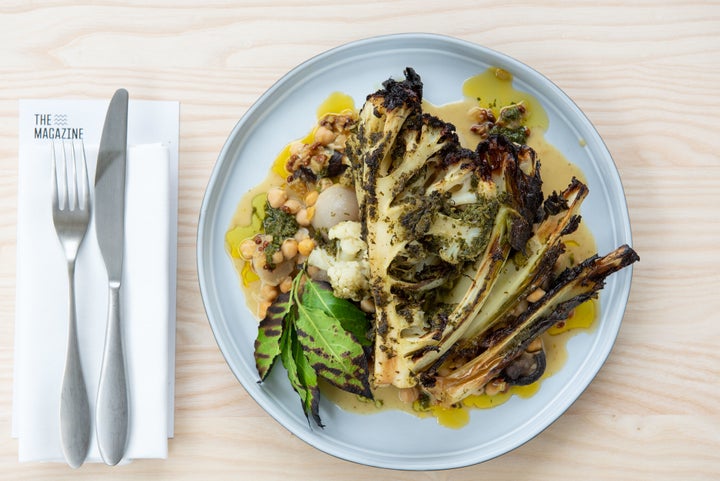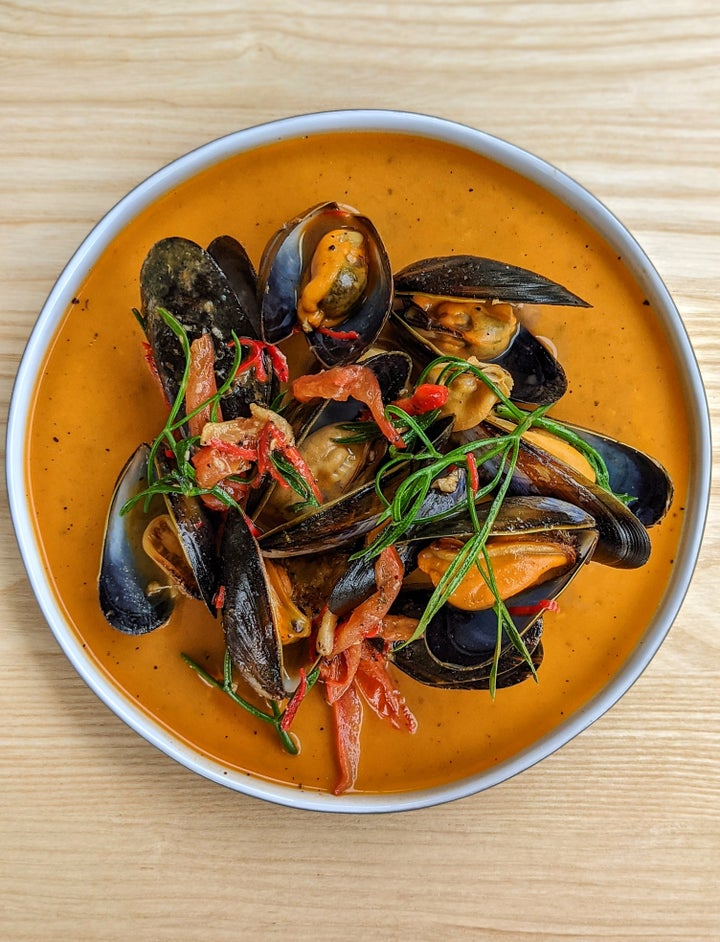
Replace farmed salmon with rope-grown mussels and eat lentils that are grown without pesticides.
Those are two pieces of advice from eco art activists Daniel Fernández Pascual and Alon Schwabe, who go collectively by the name Cooking Sections. Through their ongoing project, Climavore, the pair explore and expose how our diets are changing the climate.
They’re fascinated by “supply chains, corporations, and governments that have enabled and benefited from the environmental breakdown we are living through” – but they’re also turning their attention to consumers, and what’s on our plates come dinnertime.
We often hear that switching to a vegan diet is the single biggest way to fight climate change on an individual level, but Pascual and Schwabe say it’s more nuanced than that. After all, not all veg are created equal.
Their approach looks at the production processes of foods in close detail, and it might be a relief for those who care about the planet, but still want to eat the occasional piece of sustainably sourced meat or fish.
“In times of rapid environmental transformation, food seasons as we know them are seizing to exist. In supermarkets, there are tomatoes in winter, turnips in summer and salmon all year around,” Pascual explains.
“At the same time our food landscapes are influenced more and more by periods of droughts, floods, polluted oceans and soil exhaustion.”

Climavore proposes a more flexible approach to eating, where we choose ingredients that work with – not against – the environment at any given time. This might mean shifting to drought-resistant crops in a period of water scarcity, for example, or utilising filter feeders during times of polluted waters. There are also more permanent switches we could be making.
“By removing ingredients that are products of extractive industries, such as farmed salmon, and replacing them with ingredients that are regenerative and reparative, like bivalves and seaweeds, we can start shifting to more responsible ways of eating,” says Pascual.
The pair have landed exhibitions in the likes of Tate Britain and London’s Serpentine Gallery on the topic, and are now among the 2021 Turner Prize nominees.
Most recently, they’ve teamed up with the restaurant chain Benugo to offer special ‘Climavore’ dishes at 21 museum and gallery cafe and restaurants across the country, including at the V&A, Science Museum, BFI Southbank and Ashmolean Museum in Oxford.
Dishes on offer include slow-roasted cauliflower with chickpea stew, dulse and sea buckthorn, and rope-grown mussels with urfa and rock samphire.

But when we’re not visiting our favourite culture haunts, how can we eat with the planet in mind at home?
Pascual is keen to highlight that that biggest changes will come from revolutionising the “malfunctioning systems” within manufacturing. That said, he does make the following suggestions that consumers can try to adopt:
Eat lentils, beans and chickpeas that are grown locally without chemicals or pesticides. They fixate nitrogen and other compounds into the soil, and farmers are starting again to grow them together or in rotation to enhance the ground’s fertility (as they used to before the global introduction of agrochemicals and modified seeds).
Replace farmed fish with rope-grown seaweeds such as kelp, laver, dulse that provide oxygen to ocean water.
Instead of farmed or trawled fish, eating rope-grown mussels or farmed oysters is a great alternative. A single mussel filters up to 35 litres of water a day while an oyster can filter up to 150 litres of water per day.
Polyculture systems grow multiple species together to avoid diseases and pests common in monocrops. YQ flour, for instance, is made out of a mix of many wheat varieties making the crop more resilient to pests and the environment without being reliant on pesticides or chemicals. Polyculture agrosystems grow food to benefit both human and non-human species.
Learn more about the heritage varieties of apples or pears in your area, which evolved out of adaptation to those very specific conditions, instead of the standard flavourless varieties you may find in supermarkets.
Industrially farmed beef requires a lot of land to grow their feed. 85% of the world’s soybean crop is used as animal feed. Instead of feeding that protein to animals (secondary consumption), you can eat it yourself, reducing the impact of extractive land use.